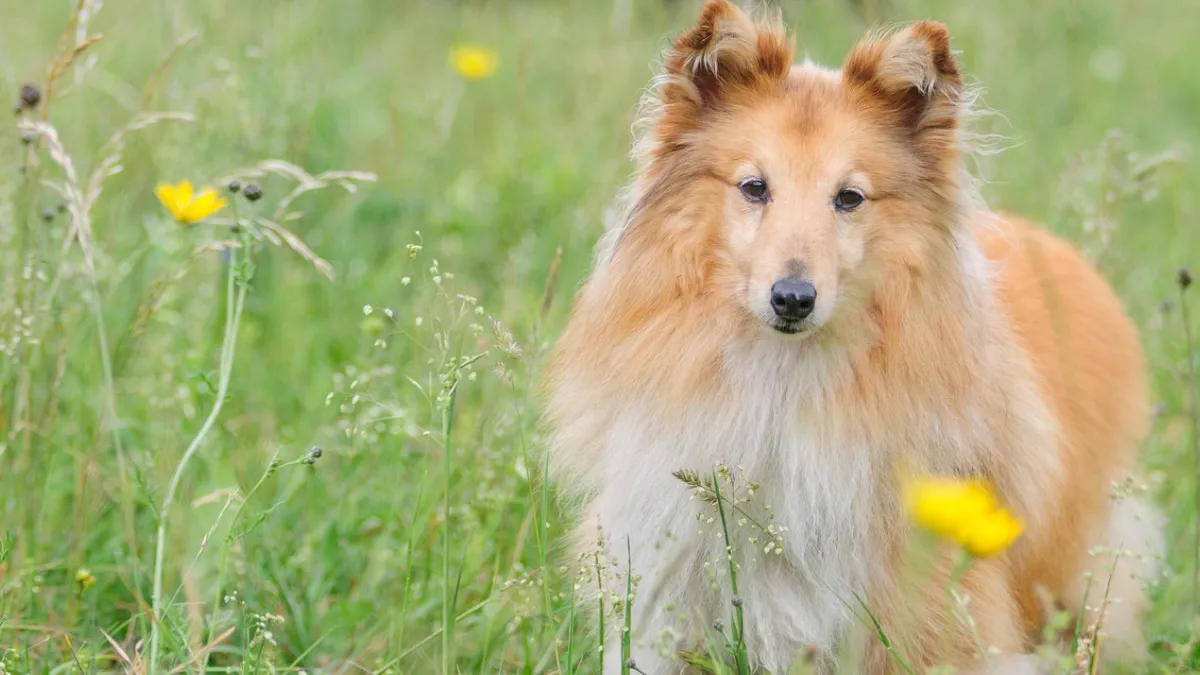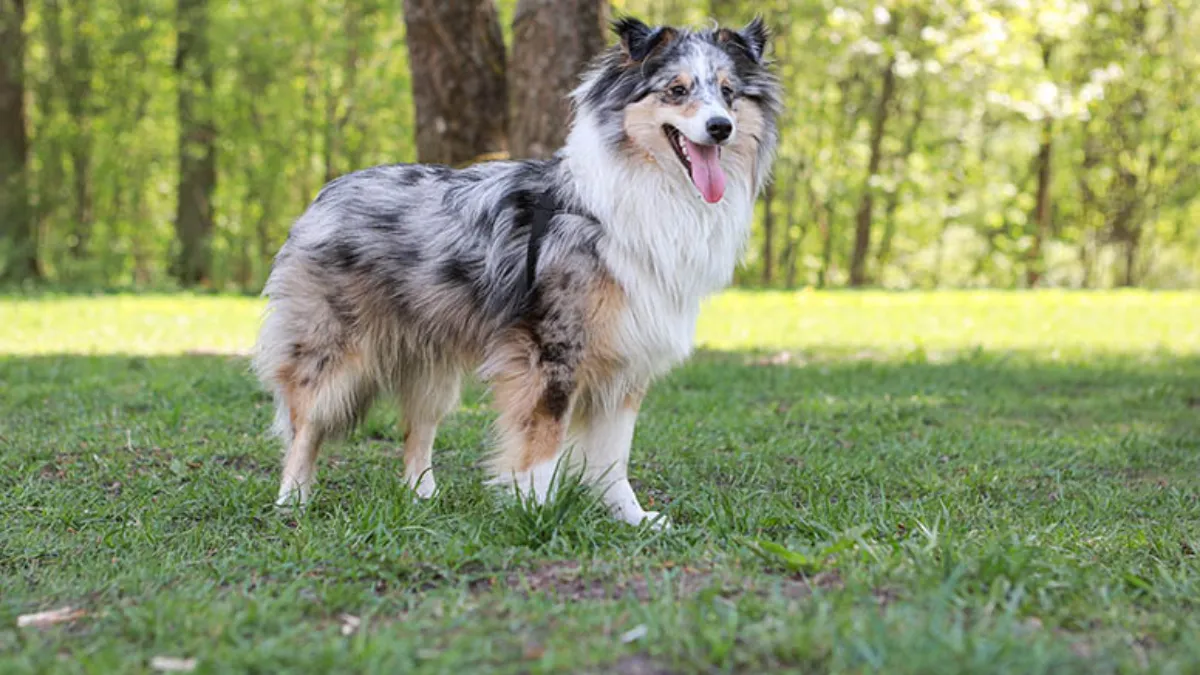Shetland Sheepdogs, also known as Shelties, are a popular breed of herding dogs known for their intelligence, loyalty, and affectionate nature. However, many people wonder if these dogs can live in apartments, given their energetic and active nature. In this article, we will explore whether Shetland Sheepdogs can thrive in apartment living and provide some tips for owners who are considering getting a Sheltie for their apartments. Can Shetland Sheepdogs Live in Apartments?
Shetland Sheepdogs, a medium-sized breed averaging 15-25 pounds and standing 13-16 inches tall, are prized for their intelligence and trainability, making them ideal companions for both families and individuals. Yet, their abundant energy and exercise requirements can pose difficulties in apartment settings. In this article, we'll explore the advantages and disadvantages of having a Sheltie in an apartment and offer advice on managing this situation effectively.

Despite their small stature, Shelties have big personalities and high energy levels, which can be challenging to manage in confined spaces. On the positive side, their intelligence and eagerness to learn make them relatively easy to train, facilitating apartment living. However, without sufficient physical and mental stimulation, they may resort to undesirable behaviors like excessive barking or destructive chewing.
To address these challenges, owners of Shetland Sheepdogs in apartments must prioritize regular exercise and mental enrichment. Daily walks, playtime, and interactive training sessions are essential for meeting their needs and preventing boredom. Additionally, providing them with stimulating toys and activities can help keep them engaged and content while indoors.
Understanding the Shetland Sheepdog
Origin and History
The Shetland Sheepdog, also known as Shelties, is a dog breed that originated from the Shetland Islands in Scotland. They were originally bred for herding sheep and were later used as a watchdog. The breed was first recognized by the American Kennel Club in 1911.
Physical Characteristics
Shetland Sheepdogs are small to medium-sized dogs with a double coat of fur that sheds heavily twice a year. They come in various colors, including sable and blue merle. They have expressive eyes and a bushy tail. The average height of a Sheltie is 13 to 16 inches, and they weigh between 15 to 25 pounds.

Temperament and Personality
Shetland Sheepdogs are renowned for their remarkable intelligence, affectionate demeanor, unwavering loyalty, and distinctive vocal tendencies. They effortlessly establish friendly and gentle relationships within their families, yet may exhibit reserved and shy behaviors around unfamiliar individuals. With their exceptional compatibility with children, Shelties are widely regarded as outstanding family companions. However, to ensure their well-being and balanced behavior, consistent training and socialization are imperative to prevent excessive vocalization or anxiety.
In conclusion, Shetland Sheepdogs emerge as an exceptional breed choice for families seeking a devoted and affectionate pet. Nevertheless, their characteristic double coats and propensity for shedding may pose challenges in apartment living scenarios. Therefore, it is paramount for prospective owners to thoroughly evaluate various factors, including the breed's size, exercise requirements, and unique personality traits, before committing to adopting a Sheltie. By taking a thoughtful and informed approach to pet ownership, individuals can provide the ideal environment and care necessary for their Sheltie to flourish and thrive happily as an integral member of the family.
Shetland Sheepdog Care in Apartments
Shetland Sheepdogs, also known as Shelties, are small to medium-sized dogs that are highly intelligent and affectionate. They are a popular breed among apartment dwellers due to their size and adaptability. However, like all dogs, they have specific care needs that must be met to thrive in an apartment environment.

Exercise Requirements
Despite their small size, Shetland Sheepdogs have high energy levels and require daily exercise to maintain their physical and mental health. This can include daily walks, playtime, and mental stimulation such as obedience training or puzzle toys.
Training and Socialization
Shetland Sheepdogs are highly intelligent and trainable, making them a good fit for apartment living. Positive reinforcement training and early socialization are important for helping them develop good behavior and social skills.
Health and Nutrition
Like all dogs, Shetland Sheepdogs require a healthy diet and regular veterinary care to maintain their health. They are prone to certain health issues such as hip dysplasia, so it is important to work closely with a veterinarian to ensure they receive the appropriate care.
Grooming Needs
Shetland Sheepdogs have a double coat that requires regular grooming to prevent matting and shedding. This can include brushing, bathing, and trimming their fur as needed.
Overall, with proper care and attention, Shetland Sheepdogs can thrive in apartment environments. It is important to meet their exercise, training, health, and grooming needs to ensure they lead happy and healthy lives.
Living with a Sheltie in an Apartment
Shetland Sheepdogs, also known as Shelties, are intelligent, energetic, and affectionate herding dogs. While they are typically raised on farms and ranches, they can also thrive in smaller living spaces like apartments. However, there are some important considerations to keep in mind before bringing a Sheltie into an apartment.
Space Considerations
Shelties are energetic dogs that require plenty of exercise and mental stimulation. While they can adapt to smaller living spaces, it's important to ensure they have enough room to move around and play. It's recommended that owners provide at least 30 minutes of exercise per day, which can include walks, runs, or playtime in a nearby park.
Managing Barking and Behavior
Shelties are known for being vocal dogs, and excessive barking can become a problem in an apartment setting. To manage barking and other destructive behavior, owners should provide plenty of attention and mental stimulation to keep their Sheltie occupied. This can include puzzle toys, interactive games, and training exercises.

Interaction with Family and Other Pets
Shelties are affectionate dogs that love to be around their family members. They are also good with children and other pets, although their herding instinct may cause them to try and round up smaller animals. Proper socialization and training can help prevent any potential conflicts and ensure a harmonious living environment.
Overall, with proper attention and care, Shelties can make great apartment pets for those who lead an active lifestyle and have the time and energy to provide their furry friend with the love and attention they need.
Additional Considerations
Adaptability and Training Tips
Shetland Sheepdogs, or Shelties, are intelligent and trainable dogs that can adapt well to apartment living if given sufficient mental and physical stimulation. However, it is important to note that each dog is unique and may have different needs and preferences.
To ensure a happy and well-adjusted Sheltie in an apartment, it is recommended to provide them with regular exercise and mental stimulation. This can include daily walks, playtime, and training sessions using positive reinforcement techniques. Shelties also enjoy participating in activities such as rallies and agility, which can provide additional mental stimulation and exercise.

It is important to note that Shelties can be protective and make good watchdogs. This trait can be managed through early socialization and training to ensure that they do not become overly aggressive or bark excessively.
Common Challenges and Solutions
Living with Shelties in apartments presents common challenges, notably their high energy levels. Shelties, being inherently energetic, demand consistent exercise to deter destructive behaviors. Owners can address this by ensuring daily walks, engaging playtime sessions, and involving them in activities like rallies and agility. By offering ample outlets for physical activity, owners can effectively manage their Sheltie's energy levels and promote a well-balanced lifestyle.
Another challenge lies in meeting Shelties' grooming requirements. With their thick double coat, regular brushing is essential to prevent matting and tangling. It's advisable to brush their coat at least once a week and schedule routine grooming appointments to maintain optimal coat health. Adequate grooming not only enhances their appearance but also promotes skin health and overall well-being.
Furthermore, Shelties can exhibit shyness, underscoring the significance of early socialization. Introducing them to various stimuli in a positive and controlled manner can mitigate this behavior. Positive reinforcement training techniques play a crucial role in fostering confidence and facilitating socialization, laying the foundation for a well-adjusted and outgoing Sheltie.
Overall, with proper care and attention, Shelties can thrive in apartment settings. Understanding their unique needs and providing adequate mental and physical stimulation are paramount to ensuring their happiness and well-being. By addressing challenges such as energy levels, grooming demands, and shyness through consistent training and attentive care, owners can create an enriching environment conducive to their Sheltie's overall health and happiness.

Conclusion:
In conclusion, while Shetland Sheepdogs, or Shelties, are known for their active nature and need for space, they can adapt to apartment living under certain conditions. Can Shetland Sheepdogs Live in Apartments?
Provided they receive enough mental and physical stimulation through regular exercise and mental enrichment, Shelties can thrive in apartment settings. Daily walks, playtime, and interactive toys are essential to keep them mentally and physically stimulated, preventing boredom and potential behavior issues.
Additionally, apartment dwellers must ensure that their Shetland Sheepdog has access to outdoor areas for bathroom breaks and opportunities to stretch their legs. Living in a pet-friendly apartment complex with green spaces or nearby parks can facilitate this need for outdoor activity.
Furthermore, proper training and socialization from an early age are crucial to help Shelties become well-behaved and adaptable apartment companions. Teaching them commands such as "quiet" can help manage their barking tendencies, ensuring harmonious coexistence with neighbors.
In summary, while Shetland Sheepdogs may not be the ideal breed for apartment living, they can thrive in such environments with the right care, exercise, and training. Can Shetland Sheepdogs Live in Apartments? With dedication and proper accommodations, the answer is yes.




